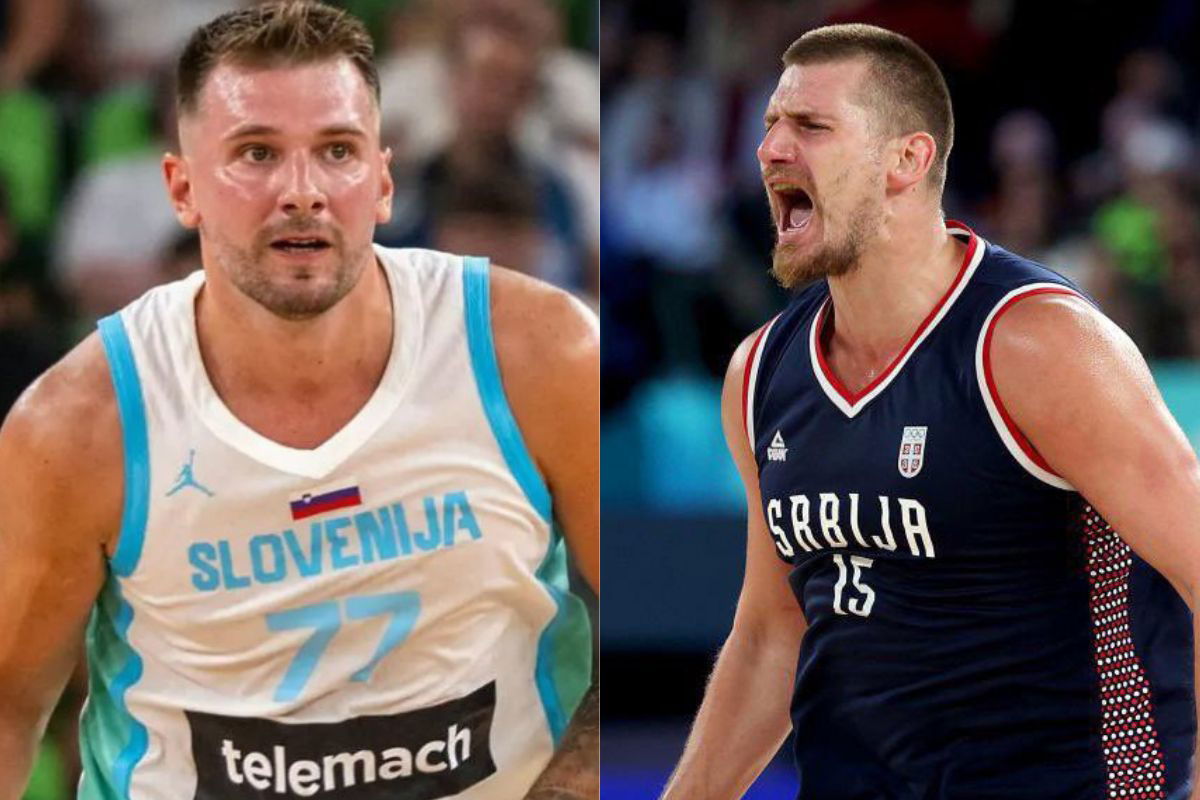

Talk of an NBA style league in Europe has been bubbling for months and it is now edging closer to reality, with league bosses, big clubs and national bodies all in talks. NBA commissioner Adam Silver and his team have been meeting with European heavyweights and local officials to test the idea and to scope commercial appetite. And FIBA Europe has been part of the conversation. ASVEL owner Tony Parker has been one of the loudest champions of a joint approach and while visiting China he said that “if the EuroLeague, the NBA, and FIBA can find a way to work together to build a strong league. That will be amazing for European basketball”. His voice matters because he sits inside the EuroLeague world and courts NBA partners.
Watch What’s Trending Now!
The rationale is straightforward and the targets are obvious: Europe has top clubs, packed arenas and a steady stream of NBA talent, so a continentwide competition could unlock new TV deals and sponsorships. Reporting and pundits have sketched out an initial footprint of eight to twelve permanent franchises in major markets, with Bill Simmons among those saying the product could start smaller and grow over time. “From what I’ve heard and from what’s been reported, it’s probably a 10-team league, but they could get away with eight. Maybe you grow it to 12,” he said recently.
FIBA Europe president Jorge Garbajosa has been quoted as hearing a 2027 launch date, which aligns with licensing cycles in existing European competitions and with a new British plan that appears to be timing its own debut around the same window.
ADVERTISEMENT
The first public hint of concrete cities came on social media when Legion Hoops posted a short update and wrote “REPORT: The NBA Europe league will start in 2027 with teams based in London and Manchester, per @Eurohoopsnet”. That message follows a formal statement from the newly formed British body GBBL which says two NBA Europe teams based in London and Manchester are expected to compete in its national setup, and it matches broader reporting that lists Paris Madrid Barcelona Milan Berlin Istanbul and Athens among the likely future franchises. Industry chatter and Reuters style coverage have also named clubs like Real Madrid Barcelona Fenerbahce and AC Milan as anchor targets for the new venture. So without further delay, let’s take a closer look at what the scenario is shaping up to be-
What is the NBA Europe League and why it matters
The NBA Europe League is envisioned as a standalone professional basketball competition exclusively for European teams, completely separate from the North American NBA. It’s being developed through a groundbreaking partnership between the NBA and FIBA, basketball’s global governing body. This isn’t an expansion of the NBA itself; rather, it’s a new entity designed to tap into Europe’s status as the second most popular sport on the continent and its hundreds of millions of passionate fans.
ADVERTISEMENT
The league matters because it aims to fix what Commissioner Adam Silver sees as a major disconnect. He stated, “The commercial opportunity has not kept pace with the growth of the game,” pointing out that despite Europe producing MVPs like Jokić and Antetokounmpo, the business side of basketball there hasn’t reached its full potential. This venture would create a new, financially robust ecosystem that could better support and showcase European talent.
For players, coaches, and fans, this represents a monumental shift. It promises NBA-level infrastructure, marketing, and financial stability within Europe, providing a new pinnacle for professional careers without having to cross the Atlantic. It’s about building a premier league that respects European basketball’s deep roots while elevating its global profile and commercial power.
ADVERTISEMENT
How the NBA Europe League will be different from existing competitions
The new league will fundamentally differ from current competitions like the EuroLeague through its structural foundation. It plans to implement NBA-style financial controls, including a salary cap system and a revenue-sharing model, concepts that are absent in European basketball today. This is designed to ensure competitive balance, preventing wealthier clubs from dominating and giving every team a fair chance to compete.
Top Stories
Lakers Duo Close to Luka Doncic, JJ Redick Ready to Bid LA Goodbye in Depth Trades – Insider

Did Zion Williamson Slide Into Sydney Sweeney’s DMs? Fact Checking the Viral Screenshot

DiJonai Carrington Publicly Criticizes WNBA’s ‘Greedy’ CBA Approach While Addressing League’s Unrivaled Stance

WNBA Responds to WNBPA Strike Authorization Vote With Official Statement

Calls Mount Against Dillon Brooks For ‘Intentionally’ Hurting Stephen Curry

The governance will also be a major change. Instead of the complex web of national federations and licensing deals that define the current landscape, NBA Europe would operate under a unified governance model jointly managed by the NBA and FIBA. This streamlined approach is expected to create consistency in operations, officiating, and commercial partnerships across all markets, making the league more efficient and stable.
ADVERTISEMENT
Furthermore, the league structure itself is unique. It’s planned as a semi-closed system with 16 teams: 12 permanent franchise licenses and 4 qualification spots earned through merit-based performance in domestic leagues or FIBA’s Basketball Champions League. This blends the stability of North American franchises with the competitive meritocracy European fans expect, offering a fresh alternative to the existing format.
Key Cities and Teams Likely to Join the NBA Europe League
London and Manchester are the first two cities officially named in reports, with the Great Britain Basketball League confirming they are expected to host teams when the league launches. The NBA sees major markets like these, where basketball is popular but arguably underserved by the current system, as prime opportunities for new franchises to thrive and attract a massive audience.
ADVERTISEMENT
Beyond the UK, the NBA is reportedly targeting established European powerhouses. Real Madrid and FC Barcelona are seen as the biggest potential acquisitions, with Real Madrid’s EuroLeague license expiring in 2026, creating a natural transition point. Other top candidates include LDLC ASVEL Villeurbanne, owned by Tony Parker, and Turkish giant Fenerbahçe Istanbul, who would bring instant credibility and a fierce rivalry.
The league is also looking to place new franchises in other major European capitals where the commercial potential is high. Paris, Berlin, and Rome have all been mentioned as key targets. The NBA has even engaged with powerful soccer clubs like Paris Saint-Germain and Manchester City about launching basketball counterparts under their existing brand umbrellas, leveraging their huge fan bases and infrastructure.
ADVERTISEMENT
The role of FIBA and other partners in launching the league
FIBA is the NBA’s essential partner in this ambitious venture, providing the official governance and integration needed to make it work within the global basketball landscape. The partnership, announced in March 2025, received support from both organizations’ governing bodies. FIBA ensures the league will be woven into the existing European structure, with teams continuing to play in their domestic leagues to comply with European sports law and tradition.
The collaboration extends to the financial and strategic realms. The NBA has hired major financial institutions like JPMorgan to handle the complex structuring and investor relations, and The Raine Group for strategic planning. These partners are crucial for attracting the necessary investment, with franchise fees expected to be between $500 million and $1 billion per team, a staggering sum for European basketball.
Perhaps most importantly, FIBA Europe President Jorge Garbajosa has been acting as a key contributor, maintaining communication between the NBA, FIBA, and the EuroLeague. This diplomatic effort is vital for aligning the interests of all stakeholders and avoiding a disruptive conflict that could split European basketball, ensuring a smoother launch for the new league.
ADVERTISEMENT
Expected timeline: When the NBA Europe League will kick off
The official target for the league’s launch is 2027, a timeline consistently referenced by multiple sources, including FIBA Europe President Jorge Garbajosa. This date wasn’t chosen randomly; it strategically aligns with the expiration of key licensing agreements for major clubs like Real Madrid, creating a natural opening for them to join the new league without contractual complications.
The timeline allows for several years of crucial groundwork. The NBA is currently in the “exploration” phase, meeting with potential investors, government officials like UK Prime Minister Keir Starmer, and existing clubs to build a consensus and secure commitments. The next major step will be a formal vote from the NBA’s Board of Governors to give the project the final green light and begin selling franchise slots.
ADVERTISEMENT
This multi-year runway is essential for building the league’s foundation properly. It allows time to establish the complex financial structures, negotiate media rights deals, finalize partnerships, and ensure the operational logistics are in place for a successful debut. The Great Britain Basketball League has already adjusted its own launch to 2027 to coincide with the anticipated first season of NBA Europe.
How the League could impact European Basketball and young talent
The impact on player development could be profound. NBA Europe promises to directly connect with the continent’s superior youth academy system, which is renowned for focusing on fundamentals and basketball IQ over the athletic-focused AAU model in the U.S. The league has pledged financial support and resources to bolster these academies, potentially producing an even higher caliber of future NBA talent.
For young players, the league offers unprecedented visibility. With NBA-level marketing and global media distribution, prospects will be showcased on a much larger stage, giving them more opportunities to be seen by international scouts. This enhanced exposure, combined with a clearer merit-based pathway to the top league through qualification spots, creates a more defined and attractive development journey within Europe.
Ultimately, the goal is to elevate the entire standard of European basketball. By introducing financial stability, competitive balance, and world-class infrastructure, the league could make playing professionally in Europe a more viable and attractive long-term career option for the best players, strengthening the sport at every level from grassroots to the professional pinnacle.
NBA Europe League financial structure: Salary caps, revenue sharing and sustainability
The financial model is perhaps the most revolutionary aspect. The league plans to implement a salary cap, a concept foreign to European sports, designed to prevent wealthier clubs from buying championships and ensuring competitive balance. Commissioner Silver emphasized the need for a system of control regarding player compensation to create a level playing field for all franchises.
Alongside a cap, a revenue-sharing model is crucial. This would see financially successful clubs in larger markets sharing a portion of their earnings with smaller-market teams. This NBA staple is intended to ensure the league’s long-term sustainability by guaranteeing that every franchise, regardless of its location or owner’s wealth, has the financial capability to compete and survive.
This structured approach addresses the wild financial disparities that currently plague European basketball. By moving away from a model where budgets can vary wildly- from AS Monaco’s €29.4 million budget to much smaller operations—and introducing collective financial controls, the league aims to create a more predictable and sustainable business environment that attracts serious, long-term investors.
How the NBA Europe League fits into the NBA’s strategy: The global vision
This league is the centerpiece of the NBA’s strategy to become a truly global brand without diluting its core product. Instead of expanding the NBA itself, which would split valuable North American media rights revenue among more owners, the Europe league creates entirely new revenue streams and fan engagement opportunities abroad, all while protecting the value of existing NBA franchises.
The vision is to build a network of international leagues under the NBA banner, following the template of the Basketball Africa League (BAL). Europe represents the single biggest untapped opportunity due to its existing passion for the sport and production of elite talent. This move strengthens the NBA’s relationship with FIBA and increases its influence over the global development of basketball.
Furthermore, this expansion is a defensive play. Reports indicate the project was fast-tracked partly in response to potential competition from a Saudi-backed international league connected to LeBron James’ business partner. By moving decisively with FIBA, the NBA secures its position as the dominant global force in basketball’s future.
The NBA Europe League is poised to trigger the most significant transformation in European basketball in decades. It represents a ambitious fusion of American business acumen and commercial power with Europe’s deep-seated passion and rich basketball traditions. By targeting a 2027 launch with cities like London and Manchester already confirmed, the vision is rapidly becoming a concrete plan.
This isn’t just about creating another league; it’s about building a more sustainable, competitive, and globally visible future for basketball in Europe. It promises to benefit everyone involved, from players and coaches to fans and investors, by raising the level of the sport and unlocking its vast commercial potential.
The collaboration between the NBA and FIBA, if successful, promises a new era for the sport. It combines the best of both worlds: the NBA’s expertise in building a world-class sports product and Europe’s unparalleled love for the game, setting the stage for a thrilling new chapter in basketball history.
ADVERTISEMENT
ADVERTISEMENT
ADVERTISEMENT

